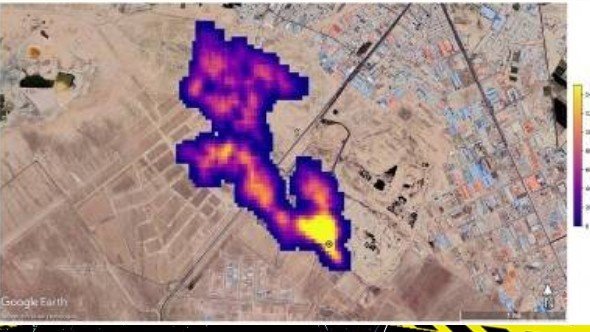Numerous space-based methane super-emitters are discovered by a NASA instrument.
orbiting NASA device that was primarily created to boost research

An orbiting NASA device that was primarily created to boost research on airborne dust and its effects on climate change has shown to be adept at another crucial Earth-science task: identifying significant, global methane emissions, a potent greenhouse gas.
Since it was installed in July on the International Space Station, the tool, an image spectrometer, has located more than 50 methane "super-emitters" in Central Asia, the Middle East, and the Southwestern United States, NASA reported on Tuesday.
Large landfills and widespread oil and gas complexes are two of the newly measured methane hotspots, some of which were previously recognised and others which were recently identified.By measuring the wavelengths of light reflected off the surface soil in certain places, the spectrometer was initially constructed to determine the mineral composition of dust carried into the atmosphere from Earth's deserts and other arid regions.
NASA's Earth Surface Mineral Dust Investigation, often known as EMIT, will aid researchers in determining if airborne dust in various regions of the world is likely to capture or reflect solar heat, thereby warming or cooling the planet.
Scientists at NASA's Jet Propulsion Laboratory (JPL) in the Los Angeles area, where the instrument was conceived and constructed, have discovered that methane absorbs infrared light in a distinct pattern that the spectrometer in EMIT can easily identify.EMIT is able to scan large parts of the earth dozens of miles across while also homing in on areas as tiny as a soccer field from its perch atop the space station, which is 250 miles (420 km) above Earth. According to Andrew Thorpe, a JPL research technologist in charge of the methane studies, some of the (methane) plumes EMIT discovered are among the largest ever seen and unlike anything that has ever been viewed from space. Methane, a result of decomposing organic matter and the main component of natural gas utilised in power plants, contributes just a small portion of all greenhouse gas emissions created by humans, but it has an 80 percent greater heat-trapping potential per unit of mass than carbon dioxide.Methane survives in the atmosphere for for around ten years, as opposed to hundreds of years for CO2, hence reducing methane emissions will have a quicker effect on global warming. Among the newly photographed methane super-emitters highlighted by JPL on Tuesday was a group of 12 plumes from Turkmenistan's oil and gas infrastructure, some of which reached distances of more than 20 miles (32 km).
Methane is believed to be released from the Turkmenistan plumes at a rate of 111,000 pounds (50,400 kg) per hour, which is comparable to the peak flow from the Aliso Canyon gas production blowout in 2015, which is one of the biggest accidental methane leaks in American history.A waste-processing facility in Iran and an oilfield in New Mexico were two additional significant sources of emissions, each of which released almost 60,000 pounds (29,000 kg) of methane per hour. According to JPL representatives, neither were previously known to scientists.
Before the end of its year-long mission, EMIT, one of 25 Earth research instruments in orbit, may discover hundreds of methane super-emitters, according to NASA.
What's Your Reaction?





















